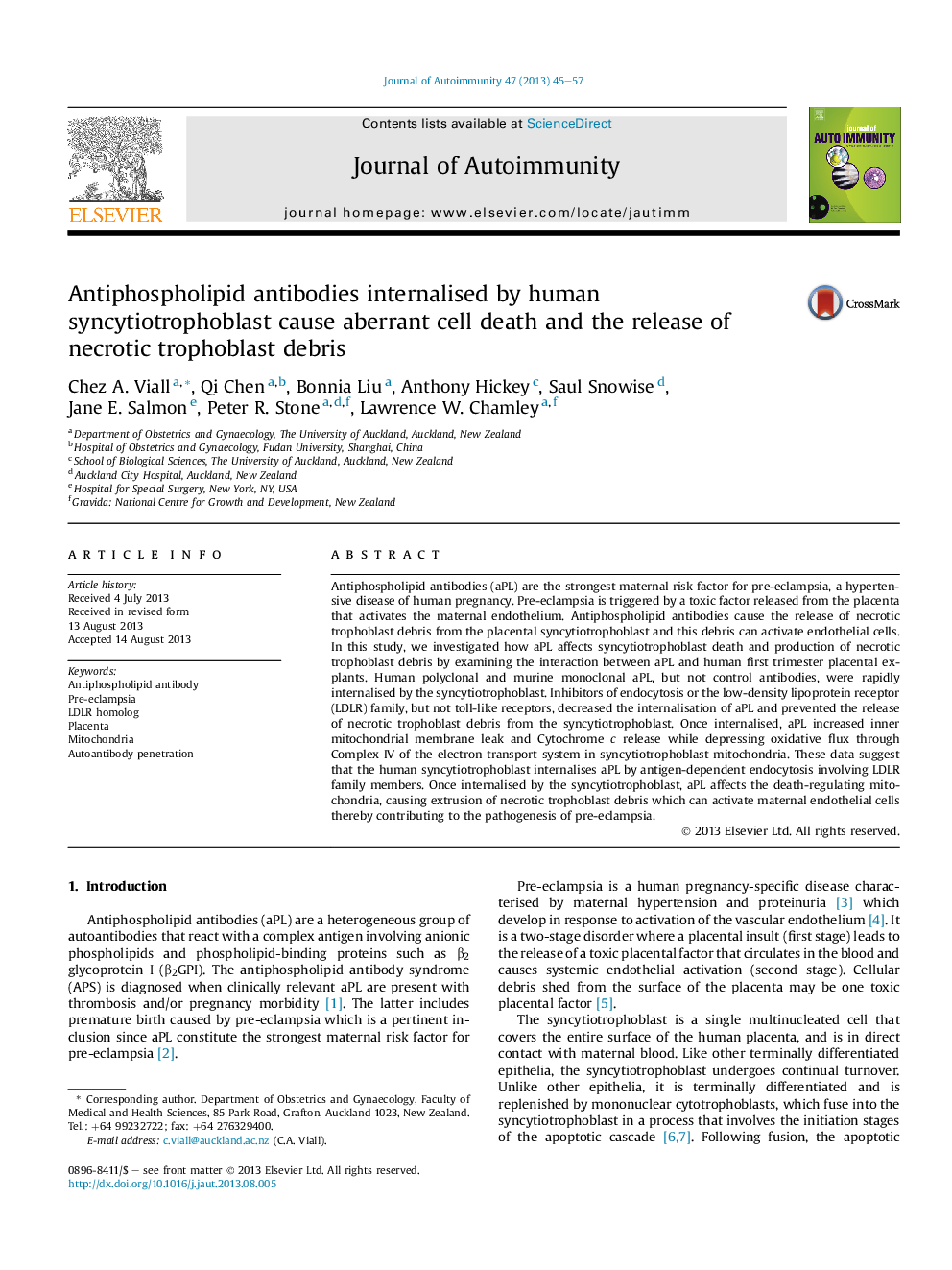| Article ID | Journal | Published Year | Pages | File Type |
|---|---|---|---|---|
| 3367816 | Journal of Autoimmunity | 2013 | 13 Pages |
•aPL are rapidly internalised by first trimester syncytiotrophoblast.•aPL internalisation involves the endocytic LDLR homologs.•Internalised aPL affects syncytiotrophoblast mitochondria.•This causes the release of endothelial cell-activating necrotic trophoblast debris.
Antiphospholipid antibodies (aPL) are the strongest maternal risk factor for pre-eclampsia, a hypertensive disease of human pregnancy. Pre-eclampsia is triggered by a toxic factor released from the placenta that activates the maternal endothelium. Antiphospholipid antibodies cause the release of necrotic trophoblast debris from the placental syncytiotrophoblast and this debris can activate endothelial cells. In this study, we investigated how aPL affects syncytiotrophoblast death and production of necrotic trophoblast debris by examining the interaction between aPL and human first trimester placental explants. Human polyclonal and murine monoclonal aPL, but not control antibodies, were rapidly internalised by the syncytiotrophoblast. Inhibitors of endocytosis or the low-density lipoprotein receptor (LDLR) family, but not toll-like receptors, decreased the internalisation of aPL and prevented the release of necrotic trophoblast debris from the syncytiotrophoblast. Once internalised, aPL increased inner mitochondrial membrane leak and Cytochrome c release while depressing oxidative flux through Complex IV of the electron transport system in syncytiotrophoblast mitochondria. These data suggest that the human syncytiotrophoblast internalises aPL by antigen-dependent endocytosis involving LDLR family members. Once internalised by the syncytiotrophoblast, aPL affects the death-regulating mitochondria, causing extrusion of necrotic trophoblast debris which can activate maternal endothelial cells thereby contributing to the pathogenesis of pre-eclampsia.
